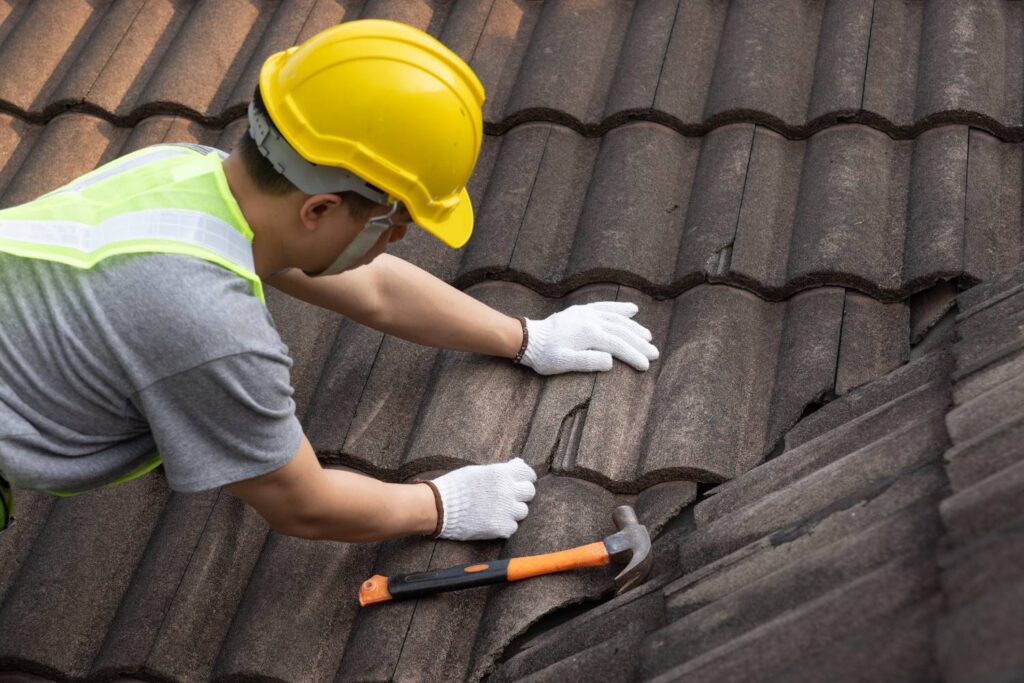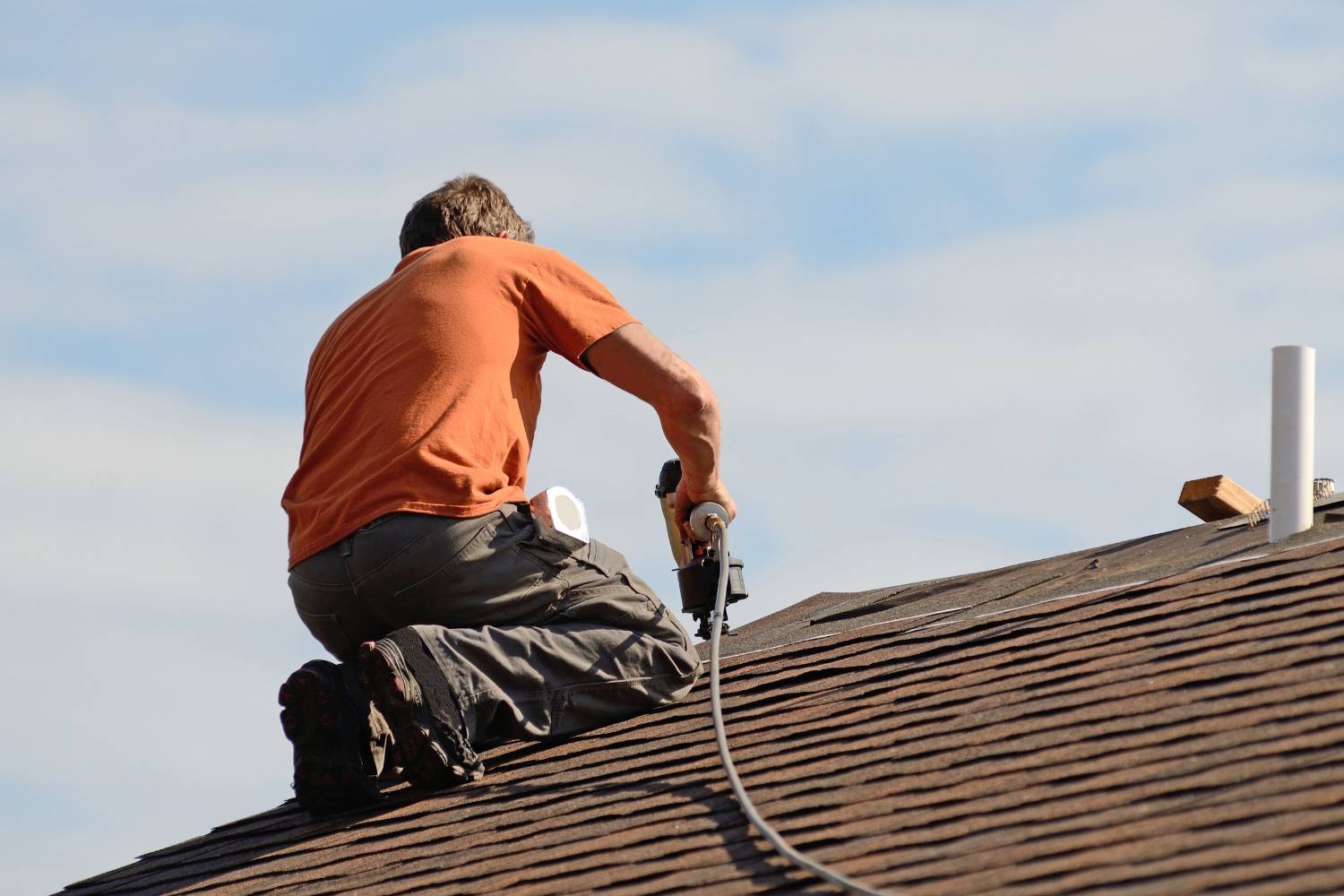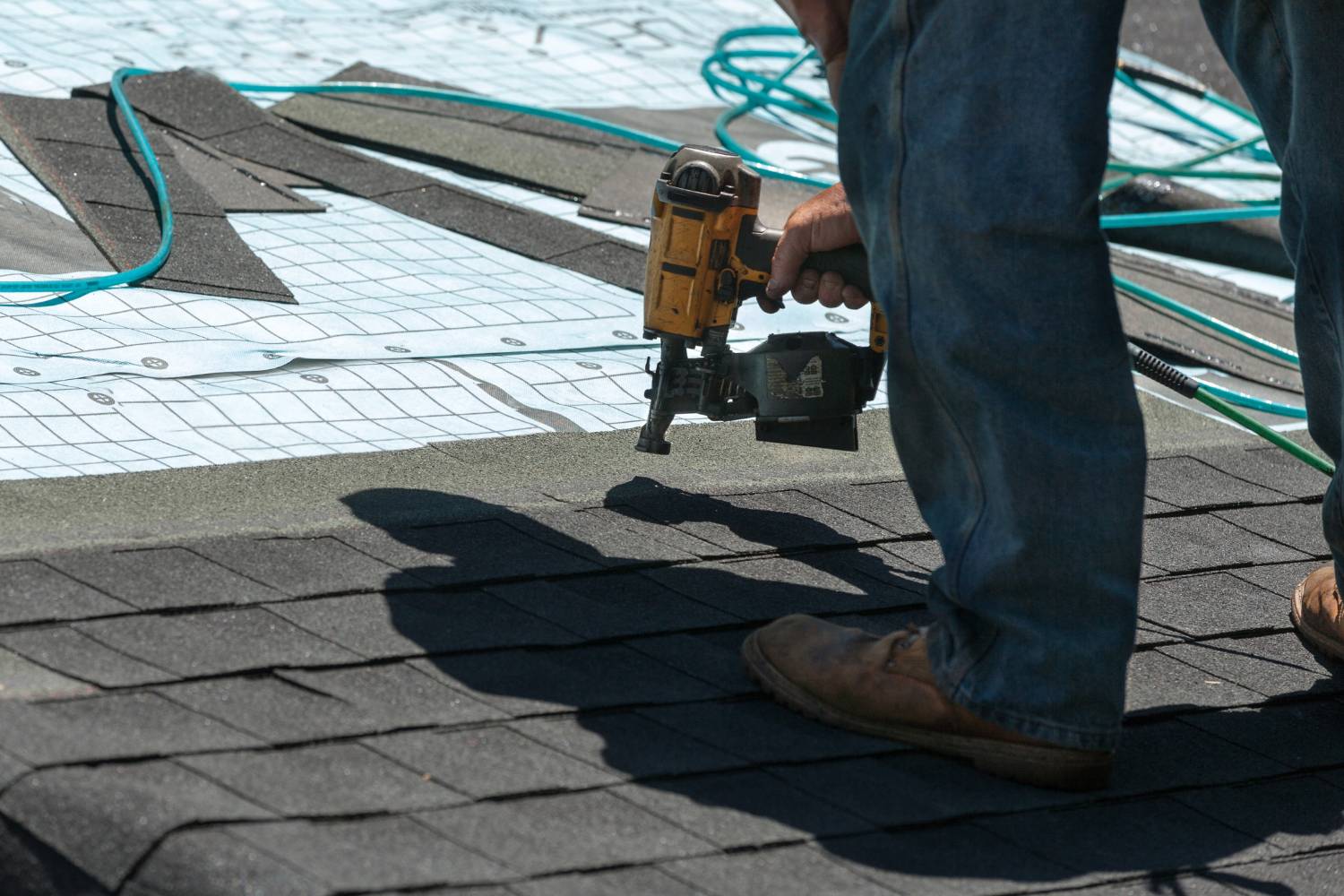Your home is your sanctuary, and one of the most critical components protecting it is your roof. Understanding the signs of roof damage and knowing when to take action can save you from costly repairs and potential hazards.
In this blog, we will explore essential topics such as identifying common signs of roof damage, the impact of moss and algae growth, how the age of your roof affects its condition, and effective inspection techniques.
Whether you're a seasoned homeowner or new to property maintenance, our comprehensive guide will equip you with the knowledge you need to keep your roof in top shape and ensure the safety and comfort of your home. Let's dive in and learn how to safeguard your investment with proactive roof care!
What Are the Common Signs of Roof Damage?
Your roof is a critical component of your home's structure, protecting it from the elements and ensuring your safety and comfort. Identifying roof damage early can prevent costly repairs and extend the lifespan of your roof. Here are some common signs of roof damage to look out for:
Missing Or Broken Shingles
- Cause: High winds, hail, and storms can cause shingles to break or blow off the roof.
- Impact: Missing or damaged shingles expose the underlayment and roof deck to moisture, which can lead to rot, mould growth, and structural damage. Regular inspection and prompt replacement of damaged shingles can prevent more serious issues.
Dark Spots Or Streaks On The Roof
- Cause: Dark spots or streaks are typically caused by algae growth or water stains from leaks.
- Impact: These discolourations indicate that moisture is penetrating the roof, which can weaken the shingles and underlayment. This can lead to leaks and further damage if not addressed promptly by a professional.
Water Stains On Ceilings Or Walls
- Cause: Water stains often appear as discoloured patches or rings on ceilings and walls, usually caused by roof leaks.
- Impact: These stains suggest that water is seeping through the roof and into the home's interior. Persistent leaks can cause significant structural damage, including weakened ceilings, wall rot, and potential mould growth.
Leaks In The Attic, Around Vents, Chimneys, And Skylights
- Cause: Leaks often occur around roof penetrations, such as vents, chimneys, and skylights, where the sealing has failed or flashing is damaged.
- Impact: These leaks can cause water damage to the attic insulation, framing, and interior ceilings. If left unaddressed, they can lead to mould growth and significant structural problems.
Wind Damage
- Signs: Wind damage is often visible as missing shingles or shingles that are loose and flapping in the wind. Damage can also occur along seams and joints where the flashing may tear or buckle.
- Impact: Wind damage compromises the roof's ability to protect the home from the elements, leading to potential leaks and further structural issues.
Hail Damage
- Signs: Hail damage may not always be visible from the ground but can include small dimples or dents in metal roofs, dark spots on asphalt shingles, and splinters on cedar shakes.
- Impact: Hail can strip granules from shingles, exposing the asphalt layer to UV rays, which accelerates wear and can lead to leaks and roof failure.
Rodent Damage
- Signs: Rodents such as squirrels and raccoons can chew through shingles near ridges or edges to access the attic.
- Impact: This creates entry points for water and pests, which can lead to significant damage and costly repairs if not promptly addressed.
Tree Damage
- Signs: Visible signs of tree damage include branches fallen on the roof or granules brushed off shingles by tree limbs.
- Impact: Heavy branches can puncture or tear shingles, leading to immediate leaks and potential structural damage. Regular trimming of overhanging branches can prevent such damage.
Is Moss Or Algae Growth On My Roof A Problem?
Moss and algae growth on roofs are common concerns for homeowners, especially in areas with high humidity and shade. While these growths may appear harmless or even charming, they can cause significant damage to your roof if not properly managed. Here's what you need to know about moss and algae growth on your roof.
Understanding Moss And Algae
- Moss: Moss is a small, green plant that thrives in damp, shady conditions. It often forms a thick, spongy mat on roofs, retaining moisture and causing potential damage.
- Algae: Algae are simple, plant-like organisms that appear as dark streaks or stains on roofs. Unlike moss, algae do not have roots but can still cause considerable issues by affecting the roof's appearance and functionality.
Why Do Moss And Algae Grow On Roofs?
Moss and algae require moisture, shade, and organic material to grow. Roofs that do not receive much sunlight, especially those in shaded areas or with poor drainage, are particularly susceptible. Organic debris such as leaves, twigs, and dirt provide a perfect environment for these organisms to thrive.
How Moss And Algae Damage Your Roof
Shorten Roof Lifespan
Moss retains moisture, keeping the roof damp and promoting wood rot and decay. Algae can cause asphalt shingles to deteriorate faster by stripping away protective granules.
Structural Damage
Moss can lift and displace shingles as it grows, creating gaps for water to seep through, leading to leaks and further structural damage. Algae growth can reduce the roof's ability to reflect sunlight, increasing heat absorption and energy costs.
Increased Weight and Pests
The weight of a thick moss layer can strain the roof structure. Moss provides a habitat for insects and rodents, creating additional problems.
Preventing Moss And Algae Growth
- Trim Overhanging Branches: Allow more sunlight to reach the roof by trimming trees and branches. This helps keep the roof dry and less hospitable to moss and algae.
- Regular Cleaning: Clean your roof regularly to remove debris such as leaves, twigs, and dirt. Ensure gutters are free of clogs to prevent water buildup.
- Proper Ventilation: Ensure your attic is well-ventilated to reduce moisture buildup, which can promote moss and algae growth.
- Use Algae-Resistant Materials: Consider using shingles infused with copper or zinc, which can help prevent algae growth.
How Does The Age Of My Roof Affect Its Condition?
The age of your roof plays a crucial role in its overall condition, performance, and the necessary maintenance it requires. Understanding the impact of roof age can help you make informed decisions about repairs, replacements, and maintenance strategies to ensure your home remains protected. Here are the key ways in which the age of your roof affects its condition:
Wear And Tear Over Time
As your roof ages, it endures various weather conditions such as sun, rain, hail, snow, and wind. This constant exposure leads to the gradual deterioration of roofing materials. Different roofing materials have varying lifespans; for example, asphalt shingles typically last around 20-25 years, while metal roofs can last up to 50 years. Knowing the age of your roof helps predict when it might need repairs or replacement.
Increased Likelihood Of Leaks And Damage
Older roofs are more susceptible to leaks, cracks, and other forms of damage. The materials weaken over time, making them less effective at protecting your home. As roofs age, minor issues such as small leaks or damaged shingles can go unnoticed until they become significant problems. Regular inspections are essential to catch these issues early.
Impact On Home Value And Insurance
A well-maintained roof can enhance the value of your home, while an ageing or damaged roof can decrease your home's market value, making it less attractive to potential buyers. Insurance companies often consider the age and condition of your roof when determining coverage and premiums. Older roofs may result in higher premiums or even denial of coverage if deemed too risky.
Safety Concerns
Severely aged roofs can pose safety hazards, including the risk of collapse during extreme weather events. Ensuring your roof is in good condition protects both your home and its occupants. Additionally, older roofs may lack modern energy-efficient features, leading to higher heating and cooling costs. Newer roofing materials often provide better insulation and energy efficiency.
Planning For Repairs And Replacement
Knowing the age of your roof allows you to plan for regular maintenance and minor repairs, extending its lifespan and preventing costly emergencies. As your roof nears the end of its lifespan, it's wise to start budgeting for a replacement. This foresight helps avoid unexpected financial burdens.
How To Determine The Age Of Your Roof
If you're unsure about the age of your roof, here are some methods to find out:
- Check Home Improvement Records: Look through your records for any receipts, warranties, or documents related to roof installations or repairs.
- Ask Previous Homeowners or Realtors: If you recently purchased the home, the previous owner or realtor might have information about the roof's age.
- Inspect Shingles for Manufacturer's Information: Some shingles have manufacturer details printed on the underside. Carefully lifting a shingle can provide clues about its production date.
- Professional Inspection: Hire a roofing contractor to assess the condition of your roof. Experienced professionals can estimate the roof's age based on material wear and other indicators.
What Inspection Techniques Can I Use To Evaluate My Roof’s Condition?
Inspecting your roof regularly is crucial to maintaining its health and longevity. Identifying potential issues early can save you significant repair costs and extend the life of your roof. Here are some comprehensive techniques to effectively evaluate your roof's condition, whether you're conducting a DIY inspection or hiring a professional.
Preparing For The Inspection
Safety should be your top priority when preparing for a roof inspection. Ensure you have a sturdy ladder, binoculars, a flashlight, a notebook, and a pen. Always have someone assist you in stabilising the ladder and providing help if needed.
Wear non-slip shoes and consider using a safety harness to prevent falls. Perform the inspection on a clear, sunny day for optimal visibility, and avoid inspections during wet or windy conditions to reduce the risk of accidents.
Exterior Inspection
Carefully examine the shingles on your roof for signs of damage, such as curling, cracking, blistering, or missing shingles. These issues can indicate weathering or damage from exposure to the elements. Different roofing materials show wear differently; for example, asphalt shingles may lose granules, metal roofs might show rust or corrosion, slate or tile roofs might have cracks or loose pieces, and wood shakes might exhibit signs of rot or insect damage.
Additionally, inspect the flashing around chimneys, vents, skylights, and roof valleys for any gaps, rust, or deterioration. Damaged flashing can allow water to seep under the roofing materials, leading to leaks and water damage.
Clear any leaves, branches, and other debris from your roof to prevent moisture accumulation and accelerate shingle deterioration. Finally, ensure that gutters and downspouts are free of blockages, cracks, or broken seams. Look for shingle granules in the gutters, which indicate shingle wear.
Interior Inspection
In the attic, look for water stains, mould, or damp insulation, which are indicators that water might be infiltrating the roof. Use a flashlight to inspect dark corners and hard-to-reach areas, and ensure proper attic ventilation to regulate temperature and humidity, preventing moisture buildup. Check that vents are unobstructed and functioning correctly.
Inspect the interior ceilings and walls for water stains or discoloration. Yellow or brown stains can point to leaks that have penetrated through the roof and attic. Also, look for signs of mould or mildew, which can indicate persistent moisture issues that need to be addressed promptly.
Professional Roof Inspection
A professional roof inspection covers surface materials, decking and frame, roof penetrations like skylights and chimneys, fascia, soffits, and the gutter system. Expect a thorough report detailing any damage or potential trouble spots, including photographs, analysis, and recommendations. This report is useful for planning maintenance and repairs.
Schedule professional inspections annually or bi-annually, especially after severe weather events, to help catch problems early and extend the roof’s lifespan. If your roof is older than five years, regular inspections become even more critical as roofs typically have a lifespan of 20-30 years, depending on the materials used.
Advanced Techniques
Advanced techniques such as drone inspections and infrared imaging can provide detailed images of hard-to-reach areas without the need for climbing. Drones are particularly useful for inspecting large or steep roofs safely, capturing high-resolution images and videos that can be analysed for damage.
Infrared imaging is used to detect moisture trapped beneath the roof’s surface by identifying temperature differences that indicate water infiltration. This allows for targeted repairs and identifies leaks and insulation issues that might not be visible during a standard inspection.
When To Call Professionals
If you encounter widespread damage, significant leaks, or structural concerns, it’s best to consult with experienced roofers. Professionals have the tools and expertise to handle major repairs safely and effectively. An official roof inspection report may be required for real estate transactions or refinancing, providing an accurate assessment of the roof’s condition.
Regular roof inspections, both DIY and professional, are essential to maintaining your roof’s health. By following these inspection techniques, you can identify and address potential issues early, ensuring the longevity and safety of your roof. For complex issues or thorough assessments, always rely on professional roofing services to get the best results and recommendations. Regular maintenance and proactive inspections will help protect your investment and keep your home safe from the elements.
Conclusion
Maintaining your roof is crucial for protecting your home from the elements and ensuring the safety and comfort of your family. By understanding the common signs of roof damage, the impact of moss and algae growth, how the age of your roof affects its condition, and effective inspection techniques, you can take proactive steps to preserve your roof's integrity.
Regular inspections, timely repairs, and preventive measures can extend the lifespan of your roof, saving you from costly repairs and potential hazards. Whether you're dealing with missing shingles, dark spots, water stains, or the effects of wind, hail, or rodents, addressing these issues promptly is key to maintaining a healthy roof.
Additionally, recognising the importance of moss and algae control, understanding the impact of your roof's age, and utilising advanced inspection techniques like drone and infrared imaging will help you stay ahead of potential problems. For complex issues or thorough assessments, don't hesitate to call in professional roofing services to ensure your roof remains in top condition.
By following the guidelines and tips provided in this blog, you can safeguard your investment and keep your home safe from the elements. Regular maintenance and proactive inspections are the best strategies for ensuring the longevity and safety of your roof.
Frequently Asked Questions
Wind damage is often visible as missing shingles or shingles that are loose and flapping in the wind. Damage can also occur along seams and joints where the flashing may tear or buckle. Look for these signs during a visual inspection of your roof.
Dark spots or streaks on your roof are typically caused by algae growth or water stains from leaks. These discolourations indicate that moisture is penetrating the roof, which can weaken the shingles and underlayment, potentially leading to leaks and further damage if not addressed promptly.
Water stains on ceilings or walls, appearing as discoloured patches or rings, usually result from roof leaks. These stains suggest that water is seeping through the roof and into the home's interior, which can cause significant structural damage, including weakened ceilings, wall rot, and potential mould growth if not fixed quickly.
Moss retains moisture, keeping the roof damp and promoting wood rot and decay, while algae can cause asphalt shingles to deteriorate faster by stripping away protective granules. Both moss and algae can reduce the roof's ability to reflect sunlight, increasing heat absorption and energy costs, and can lead to structural damage by creating gaps for water to seep through.
Rodents such as squirrels and raccoons can chew through shingles, creating entry points for water and pests. If you find signs of rodent damage, such as chewed shingles or entry holes, it's crucial to address the issue promptly by repairing the damage and implementing measures to keep rodents out, such as sealing entry points and trimming overhanging branches.


